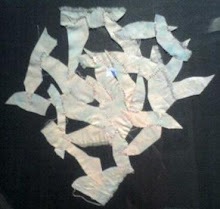Gregory Crewdson
In Gregory Crewdson's work, meaning is present but ambiguous. Subjects are pensive, but not particularly attached by apparent interaction with one another. I am intrigued by the repetitive usage of nudity as a motif. I am personally drawn to beautifully forlorn art, and I feel the tone of Crewdson's work staying with me as I struggle to pick up on the intangible portion of the narratives.
Teun Hocks
The work of Hocks is not as emotionally heavy as that of Crewdson, though they are similar in their approach to the photograph with a staged, "cinematic" concept. They also work with the subject of the mundane. Hocks observes everyday occurances in a fashion reminiscent of the playful Dada movement, as opposed to the dramatically questionable and mysterious settings captured in Crewdson's work.
Jeff Wall
I think that Jeff Wall's rebuttal to David Shapiro's question about the criticism of Arielle Pelenc was particularly deep, because at first, like Shapiro, I was unsure of how I felt about the lack of fragmentation in Wall's art. As a highly detailed person myself, I thrive on art that contains so many different elements to it. However, the unity of a single composition forces me to reevaluate the "law" of the avant-garde movement to abandon anything before it as obsolete. I am satisfied that he seeks to continue to explore the importance to the early artists and the value of the unification constructed without the Modern movement of fragmentation.
Cindy Sherman
Sherman's film stills are obviously paralleled with the works of the previous artists in the presence of the photography/cinematic element of the content. The subjects of her pieces--mostly women--are captured in a way that encourage the viewer to understand that there is more going on beyond the photo, whereas Crewdson's work is capturing it within his pieces as a questionable moment in a narrative plot. Before reading the interview, I considered that maybe Sherman is a Guerilla Girl, and her interview has reinforced my theory on this mystery.
skip to main |
skip to sidebar
I will attempt to construct a legit running regiment, follow through with it, resulting in the kicking of ass.
